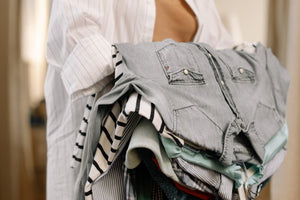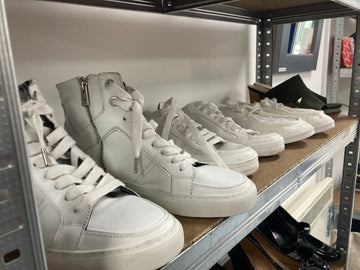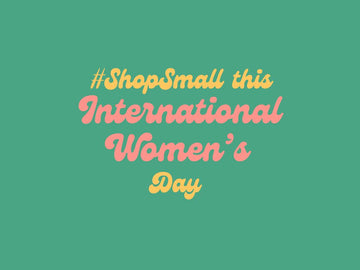Wrestling with the Temptations of Fast Fashion
Fast fashion is so tempting!
Of course, it is. The fashion industry is great at what it does. It is exactly that – an industry, and a massive industry at that. It stands to reason that the fashion industry is leading the way in marketing and advertising, influencing us in any way possible to slavishly follow its trends and therefore buy, buy, buy!
It’s always been the way. Clothes matter to us and how we look is important to us. Some would even say our clothes define us. Far many men and women, fitting in matters, and so adopting the right look and being bang on trend makes individuals feel like they belong.
And now social media has taken fashion to a whole new level – we’ve even invented a new role for ‘influencers’, social media role models who are given free outfits to promote and make us want to buy because if this particular model/celebrity/cool Instagram famous girl loves it, then we have to shop that look too.
New trends are created by the day. It can feel exhausting trying to keep up. Fortunately, clothing from fast fashion brands is so easily available and affordable that we can keep buying, wearing once and discarding, buying, wearing once and discarding in a never-ending cycle.
You may not consider yourself a follower of trends, but you still love buying new clothes, right? You get easily bored with the items in your wardrobe, you often feel like you have nothing to wear or you feel a little low and know that a new dress is exactly what you need to brighten your mood. And what’s wrong with that? Why is fast fashion so bad?

Why is fast fashion so bad?
Let’s look first at what fast fashion actually is. Fast fashion describes low-cost designs (we’ll come to the impact of that in a moment) that take inspiration from the catwalk and appear in our stores at an impressive(!?!) speed.
There was a time when there were two seasonal collections in the fashion calendar: Autumn/Winter and Spring/Summer. Then that developed into four ‘trend seasons’ a year that coincided with the actual seasons. Now new trends are introduced much more regularly – often, every two weeks, how insane is that?!
Because of the necessity for speed and an affordable price point, these clothes are often made from low quality materials in terrible working conditions by individuals working long hours for an unfair wage in factories where the environmental impact of production is massive and yet largely ignored. And usually on the other side of the world, so it’s easy to turn a blind eye and carry on regardless….
I go into all this in much more detail in TEN GREAT REASONS TO BUY PRELOVED if you want to find out more.
Which brands are the worst culprits?
It’s complicated. The usual suspects are the supermarket clothing brands – think George, Tu, F&F, Nutmeg – and of course, Primark (and other stores like Matalan, Peacocks, Bon Marche etc). Online, there are new brands springing up each day (huge right now are ASOS, Boohoo, Missguided and PrettyLittleThing (which is owned by Boohoo)) – someone I know shared the other day a new site where every item is just £5. I guess a great tip is – if it’s really cheap, there’s usually a good reason why. And when I say ‘good’ reason, I of course mean a very, very bad reason!
It’s complicated because sometimes those brands do create some more quality items out of sustainable fabrics (natural viscose, bamboo, organic cotton, recycled polyester) and may even make claims about better working conditions. Surely it’s OK to support these brands in making more ethical decisions about the production and quality of their clothing collections, isn’t it? Well, yes, I guess so, but what if it’s a smokescreen to hide the majority of their unethical practices?
‘Don’t look over there, look over here!’
The next level up, we have the brands like Topshop, Miss Selfridge, New Look, H&M, Gap etc. Everything is changing in that corner of the High Street fashion industry right now, as this level of fashion has been hit hard by the pandemic, but historically, even though these brands can be more expensive, the news behind the scenes is not encouraging. Dig deep enough and you’ll find stories of terrible working conditions (sometimes fatal); malpractices like relabelling clothing from other brands and selling at a higher price; negligent pollution of the planet; underpaying staff in their retail outlets in the UK; quality so bad even charity shops won’t resell them!
And, of course, the biggie that encompasses it all is this: fast fashion is great at encouraging the UK’s throwaway clothes culture. And let’s face it, that simply is not sustainable for the planet.
I guess a great tip is – if it’s really cheap, there’s usually a good reason why. And when I say ‘good’ reason, I of course mean a very, very bad reason!
So is it OK to buy preloved fast fashion items?
There’s no easy answer to this either! Again, it’s complicated. If your vision is to reduce waste to landfill, like it is for us here at Green Heart Collective, then reselling and rewearing preloved clothing, whatever the brand, does exactly that. If we want each item of clothing to have an extended life by choosing preloved, then the label is irrelevant – and if you have an addiction to fast fashion brands, then it is definitely 100% better to choose preloved than brand new. You’d been amazed at how quickly people discard the latest fashion items and if you know where to look (Depop is great for this), then you’ll never be far behind the curve.
However, wearing items from these fast fashion brands keeps those brands in circulation. It makes them desirable. And buying preloved depends on someone having bought the item direct from one of these brands in the first place.
Here at Green Heart Collective, we are committed to reducing waste to landfill, and for that reason, we will sell whatever we receive as donations, regardless of the brand. We’re also committed to re-educating ourselves and others – that’s the reason for this blog! – so that hopefully, going forwards, there will be less of these brands in circulation and less demand for them and the face of fashion will change forever. That is the dream!
As for me personally, I have vowed never to set foot in any of these stores or to buy online from them direct ever again. I’m educating myself about more sustainable brands and choosing vintage/quality brands where possible. And I’m also trying to resist the urge to overbuy, even if the items are preloved. I’ll buy what I absolutely love or need, that’s all, and for each item I buy, I donate one item from my wardrobe.

What is slow fashion and why does it matter?
Slow fashion is not buying preloved, or at least the term did not start out that way. Slow fashion is sustainable fashion, beautifully crafted pieces that stand the test of time and stay in your collection for many years. They’re timeless pieces, that can be switched up with different accessories etc to keep up with the times. They’re made from quality fabrics – preferably sustainable – and do not show signs of wear.
To adopt slow fashion in this way is a big ask for many of us who are bombarded with temptation and influences to do completely the opposite: buy cheap and buy often. These items are much more expensive and this can be off-putting and even prohibitive. It’s about changing a mindset to spend on one quality item what you would spend on five cheap items that you would discard before the season is out. There is a joy in spending more than you normally would on an item that you will cherish forever – as long as you are strict with yourself and don’t buy all the cheap stuff too!
And then there is buying preloved: quality brands become more accessible and affordable when they have been previously worn. And of course, the great thing is that a quality brand will not show signs of wear in the same way as the cheaper fast fashion brands, so it really is a win win!
OK, so what can I do?
- Stop buying new from fast fashion brands. Make a pledge with yourself or with a friend and stick to it!
- Explore some more expensive brands that are transparent about their effect on people and planet – then have a look on eBay, Depop, and of course, Green Heart Collective for preloved items from these brands.
- Buy less. Find a different hobby. Get better at switching your outfits up so you don’t bore so quickly.
- Learn how to sew and mend. Have a supply of spare buttons. Wear an apron when cooking (and eating!) to stop those impossible stains of tomato sauce and turmeric.
- Read the label – pick the more sustainable fabrics and follow the washing instructions.
Together, we can change the world.




